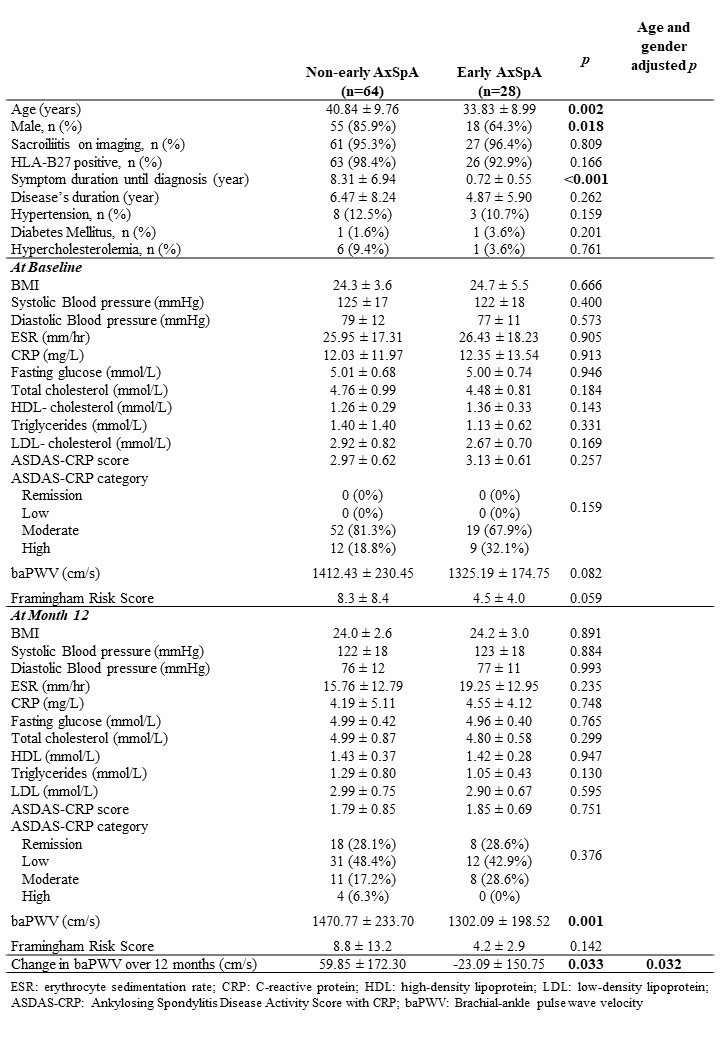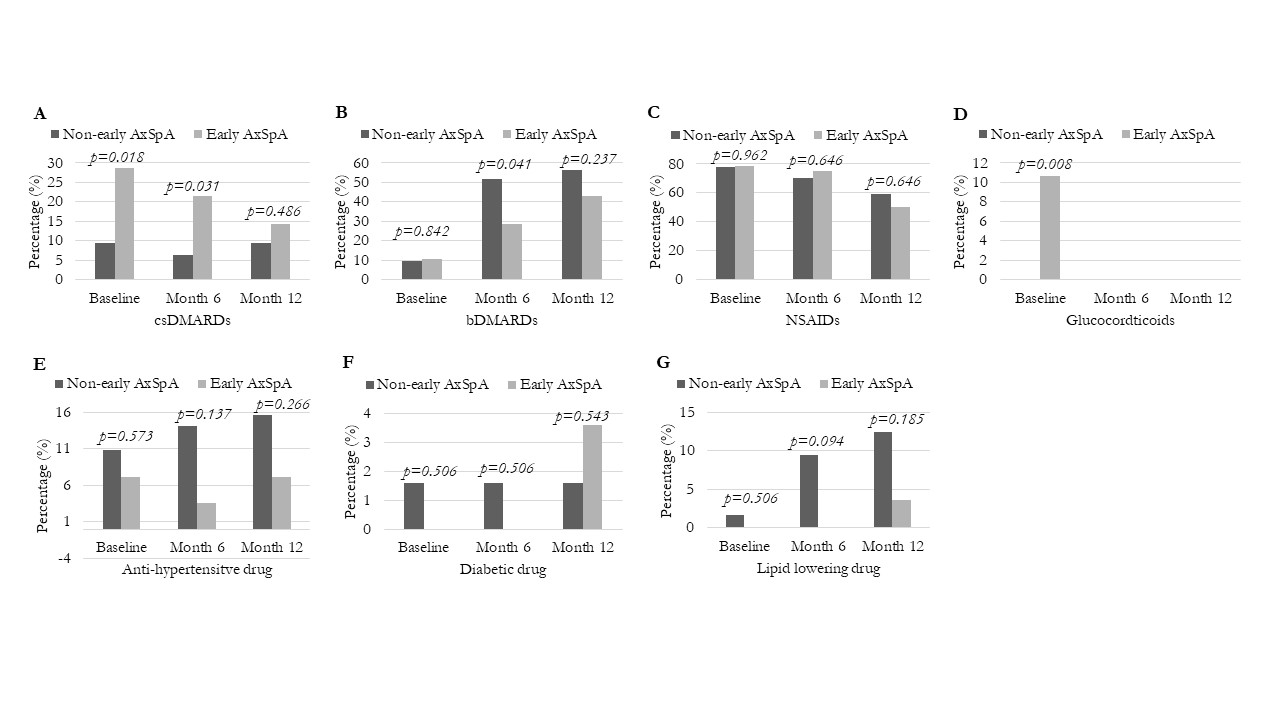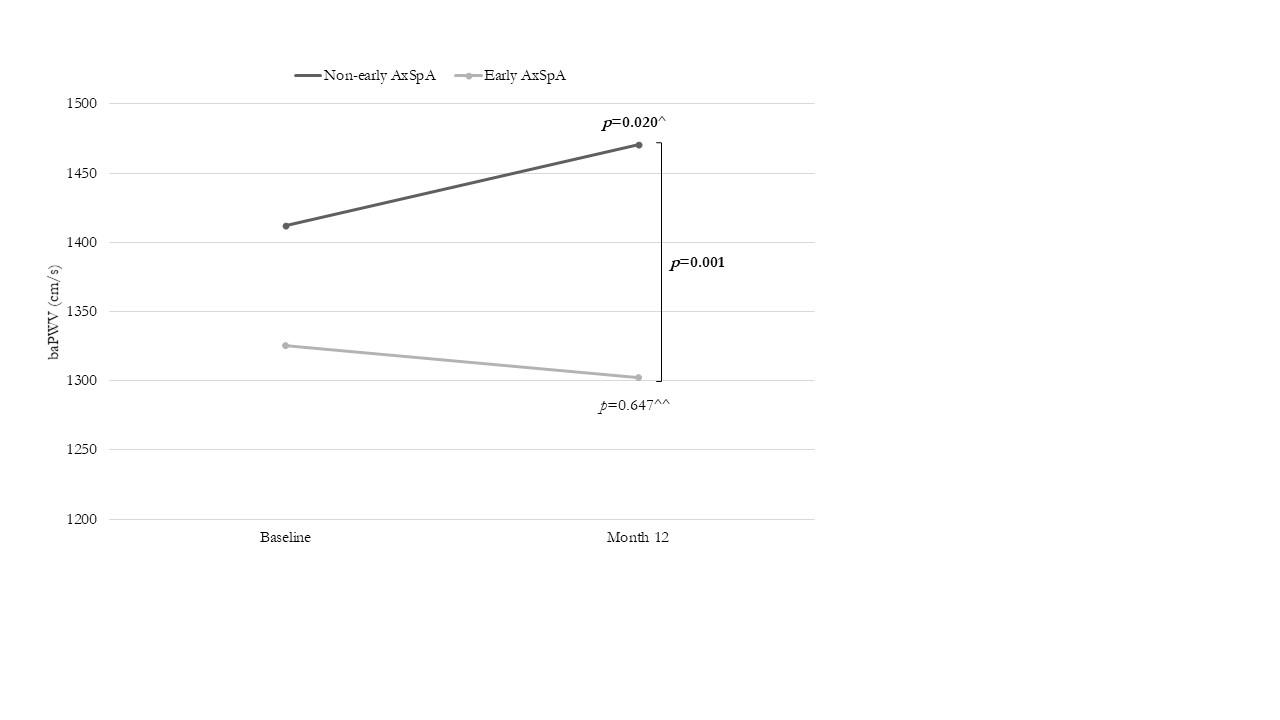Session Information
Date: Sunday, November 17, 2024
Title: SpA Including PsA – Diagnosis, Manifestations, & Outcomes Poster II
Session Type: Poster Session B
Session Time: 10:30AM-12:30PM
Background/Purpose: In patients with axial spondyloarthritis (AxSpA), we have reported that higher inflammatory burden as reflected by a longer disease duration, delay in diagnosis and higher erythrocyte sedimentation rate (ESR) levels were predictors associated with incident hypertension after adjusting for traditional cardiovascular (CV) risk factors. Whether this is due to accelerated arterial stiffness progression is worth exploring.
Methods: One hundred patients with axSpA who fulfilled the ASAS classification criteria and with active disease (ASDAS ≥2.1) were recruited from the out-patient clinic of 6 regional hospitals. All participants will receive a 2-year protocolized treatment aiming to achieve ASDAS low disease activity (LDA) in order to address the effects of treating-to-target (T2T) and vascular outcomes (The Hong Kong AxSpA T2T vascular study). Medical history, medication used, disease activity, serum levels of inflammatory markers, cholesterol and fasting glucose were measured/recorded every 6 months. Brachial-ankle pulse wave velocity (baPWV) and carotid ultrasound were assessed at baseline and yearly. In this interim-analysis, we will focus on baPWV.
Results: Ninety-two patients completed the month 12 follow-up. The patients were stratified into two groups based on the duration from symptom onset to diagnosis: less than 2 years (early axSpA group) and 2 years or more (non-early axSpA group). Table 1 and Figure 1 summarized the demographic and clinical characteristics of both groups. The baseline baPWV values were comparable between the two groups (1412.4 ± 230.45 and 1325.19 ± 174.75, p > 0.05). However, at Month 12, there was a significant difference in baPWV between the groups (1470.77 ± 233.70 and 1302.09 ± 198.52, p=0.001) (Fig 2). The early axSpA group showed a decrease of 23.09 cm/s, while the non-early axSpA group exhibited an increase of 59.85 cm/s (p=0.033). A multivariate linear regression analysis was conducted to predict the change in baPWV based on age, gender, early axSpA, use of csDMARDs, and glucocorticoids at baseline. Early axSpA remained the only significant predictor and was associated with a positive effect in reducing baPWV (β = -82.939; p = 0.033).
Conclusion: Early diagnosis may be able to prevent progression of arterial stiffness in patients with axial SpA by lowering the cumulative inflammatory burden before effective suppression of inflammation could be given to the patients.
To cite this abstract in AMA style:
Lau S, Meng H, Cheng I, Yan B, Lee A, So H, Tam L. Impact of Early Diagnosis in Patients with Axial Spondyloarthritis on Arterial Stiffness Progression [abstract]. Arthritis Rheumatol. 2024; 76 (suppl 9). https://acrabstracts.org/abstract/impact-of-early-diagnosis-in-patients-with-axial-spondyloarthritis-on-arterial-stiffness-progression/. Accessed .« Back to ACR Convergence 2024
ACR Meeting Abstracts - https://acrabstracts.org/abstract/impact-of-early-diagnosis-in-patients-with-axial-spondyloarthritis-on-arterial-stiffness-progression/



